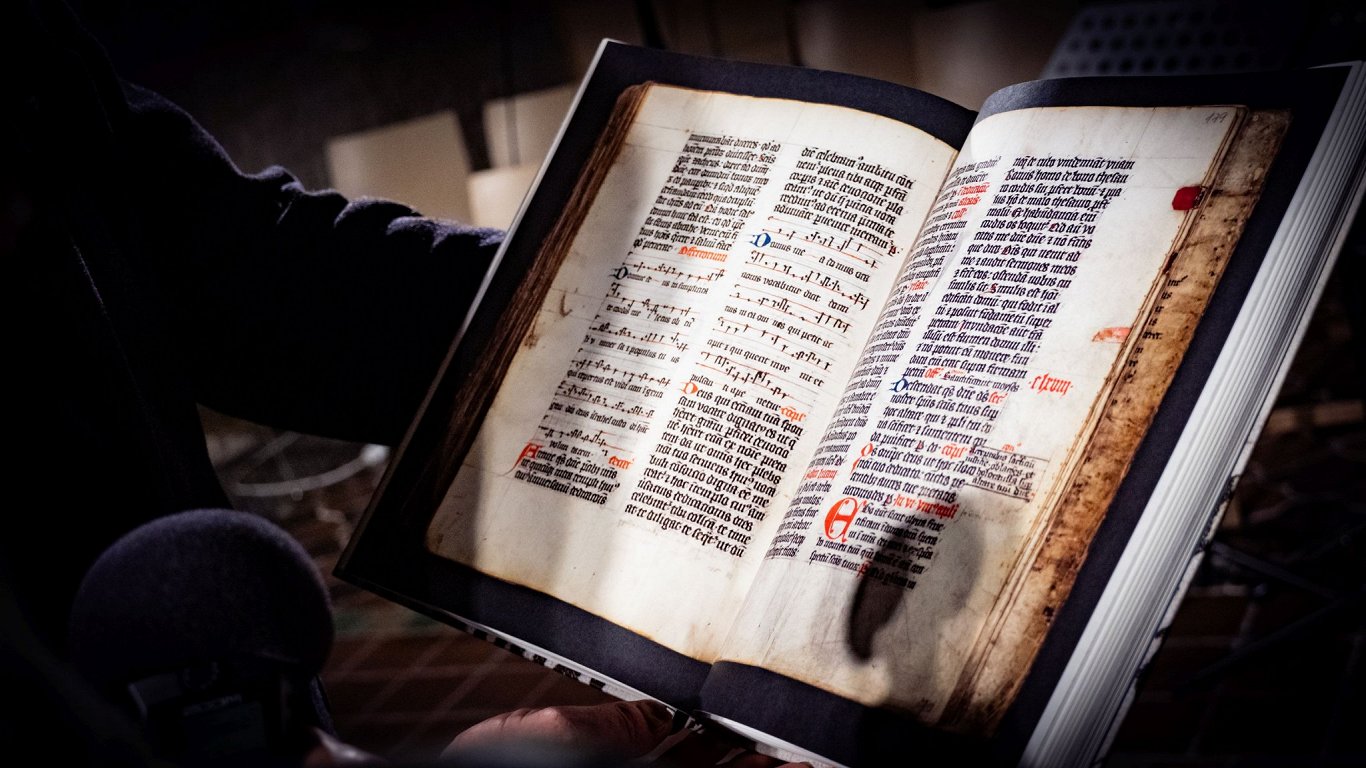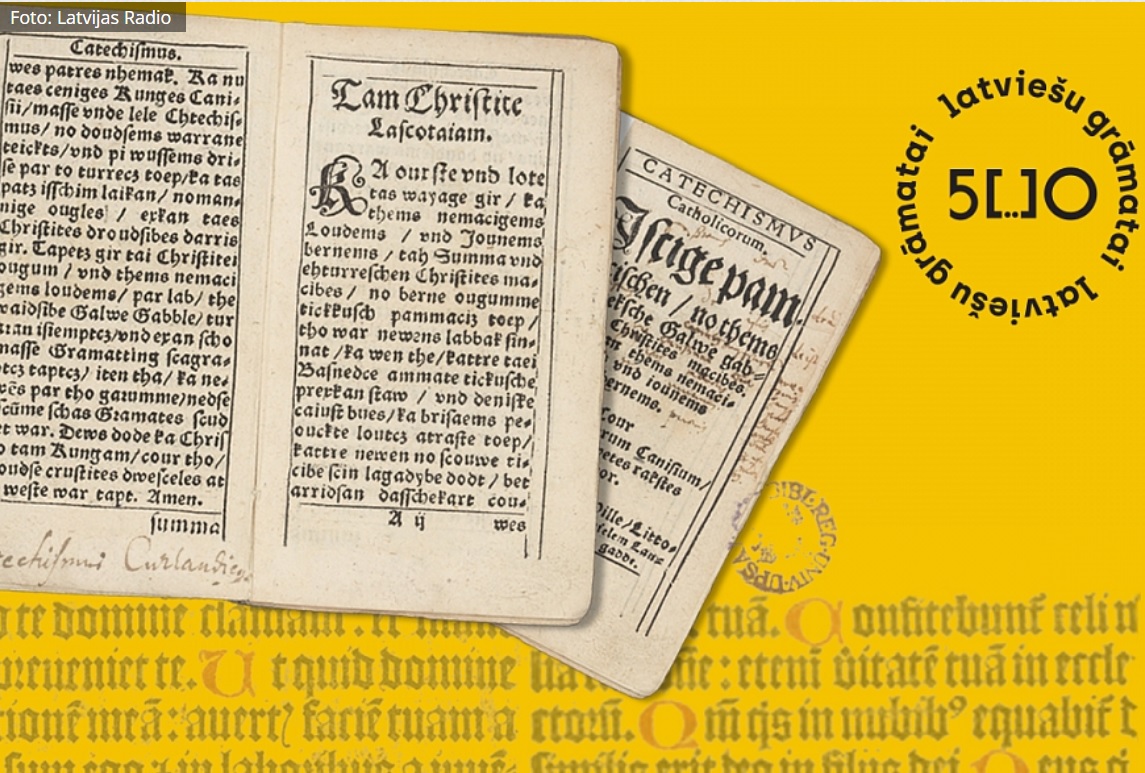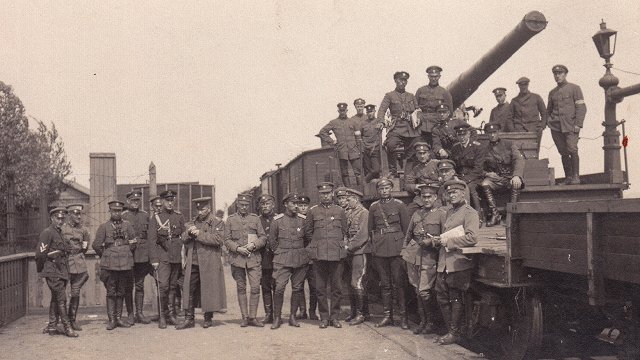More about the cycle of events can be discovered at https://www.gramatai500.lv/ and for more about the Latvian National Library and its constantly changing exhibitions and collections, visit: https://www.lnb.lv/.
Books that Created, Shaped and Survived the Reformation
This will be a story about the books that led to the Reformation and the books that shaped the Reformation. And at the same time, a story of the books that managed to survive the Reformation.
Consequently, it is important to be in St Peter's Church in Riga to talk about two important quincentenaries in the history of libraries and bibliography in Latvia (establishing of the Riga City Library in 1524 and printing of the first Latvian Protestant book (1525) and its subsequent destruction soon afterwards). The monumental walls of St Peter's Church have surrounded and been filled for hundreds of years by the seemingly material waves of time and history that have imbued the building with its true value. Here, time has truly become space. The building itself and its architecture is a historical source.
John Ruskin (1819–1900) was right when saying: “For, indeed, the greatest glory of a building is not in its stones, nor in its gold. Its glory is in its Age and in that deep sense of voicefulness, of stern watching, of mysterious sympathy, nay, even of approval or condemnation, which we feel in walls that have long been washed by the passing waves of humanity. (...) How many pages of doubtful record might we not often spare, for a few stones left one upon another!” Ruskin knew that one of the most important architectural values or categories is memory: "Memory may truly be said to be the Sixth Lamp of Architecture; for it is in becoming memorial or monumental that a true perfection is attained by civil or domestic buildings; and this partly (...) as their decorations are consequently animated by a metaphorical or historical meaning."
Standing in front of the tombstone of Andreas Knopke (c. 1468–1539) (which is now embedded in the church wall), who was called the apostle of the Livonian Reformation, two other important quincentenaries should be mentioned this year. On 12 June 1522, Knopke, a strong believer in the Reformation, held a disputation with the Franciscans about the foundations of the new faith in the St Peter's Church choir, in the presence of the Riga Burgomaster and town councillors.
After the successful disputation, Knopke was appointed Archdeacon of St Peter's Church by the Riga City Council on 23 October 1522 (in a bold violation of Catholic Church order). The speech at his installation and subsequent sermons formed the basis of Knopke's later commentary on the Apostle Paul's Epistle to the Romans. This was the first book written by a Lutheran pastor in Livonia and printed in several editions in Germany (1524, 1525). In actual fact, without book printing there would have been no Reformation!
Knopke's disputation and his appointment became the turning points of Reformation in Livonia. This is a testimony to the Reformation, showing how quickly religious disagreements could become political, administrative and social conflicts. The question of faith was indeed a question of life. Livonia, however, was spared the military and national conflicts that the Reformation provoked elsewhere.
But the story of the triumph of the new evangelical faith is inconceivable without the story of the aggressive and destructive actions of the Reformers against the values that were so essential to the "papists" – the worship of saints, the grandeur of churches, monasteries.
This is also why the history of St Peter's Church building and the history of the ancient books of Riga are closely intertwined. In 1524, a number of churches were vandalised by the merchants of Riga (from the Brotherhood of Blackheads) who were influenced by the fervent and provocative Lenten sermons that were preached by another reformer of Riga, the pastor of St James' Church, Sylvester Tegetmeyer (†1552). Incited into a "savage frenzy" by Tegetmeyer's sermons, they first destroyed and looted St Peter's Church and their own altar, then the nearby Dominican and Franciscan monasteries.
During the Counter-Reformation, the Jesuit Erdmann Tolgsdorf (c. 1550–1620) wrote and published (1614) damning words about the desecration of Riga's churches:
"First, all the pictures were indiscriminately thrown into a pile in a dark, dirty place behind St Peter's Church, and they laughingly gave this place a name: it should be called 'with all the saints'. Then one day they were so overcome by their foolishness and madness that they took all the pictures of Christ and the saints from that place and from elsewhere, gathered them all together, took them out of the city in a dung cart and threw them into a large fire and burned them till they turned into ashes. They expressed hatred in particular towards many beautiful pictures of the Blessed Virgin Mary, whom they called the sorceress."
Riga has an extremely scant medieval sacral art heritage, and the fierce destruction of churches during the Age of Reformation is mostly to blame here. However, many Catholic books and manuscripts (i.e. words, knowledge) were valued and safeguarded.
The books were taken over by the Protestant Riga City Council, following Martin Luther's instruction to the councillors and magistrates of German towns (1523) to establish book repositories that are accessible to all: "For they are useful for understanding and guiding one’s life in this world. And to discern the works and wonders of God."

It is true, however, that many Catholic books in Riga did not survive the Reformation; unfortunately, it is hard to even make a rough estimate of their number and contents; many books, therefore, were the only ones of their kind; such is the Missal (1521), bought at a high price for the church altar by the stevedores of St Peter's Church and was printed on parchment in Lübeck in 1500.
Aggression against books and libraries has always been a symbolic act, an attempt to destroy unacceptable or harmful knowledge, to undermine a sense of confessional and/or national identity. To rob the memory of something.
It is a historical paradox that books, once acquired in a rather dubious way – through the barbaric vandalization of churches and the destruction and plunder of Catholic monasteries, later formed the core of the public book collection of an Evangelical Lutheran town. To serve the common good; salus communis.





























